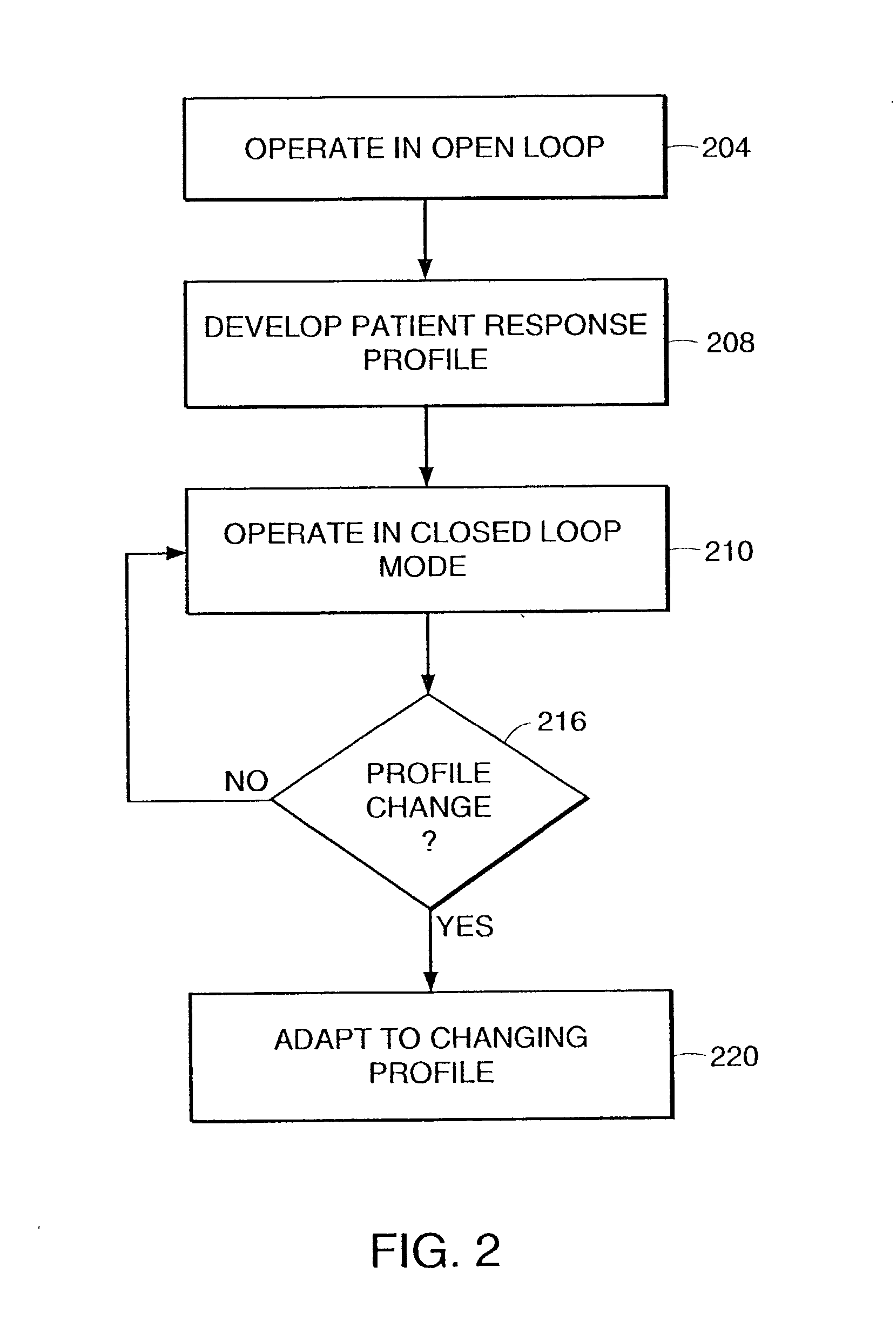System and method for adaptive drug delivery
a closed loop and drug technology, applied in the field of medication administration, can solve the problems of unfavorable observation of spontaneous movement during surgery, increased difficulty in clinical evaluation of anesthetic depth, and inability to report awareness during surgery in unparalyzed patients
- Summary
- Abstract
- Description
- Claims
- Application Information
AI Technical Summary
Benefits of technology
Problems solved by technology
Method used
Image
Examples
Embodiment Construction
in Anesthetic Drug Applications
[0057] As described above, one application of the invention is in the environment of the delivery of an anesthetic to achieve a desired level of sedation, or sedation effect, on a patient. One or more embodiments of the invention are now described in terms of this example environment. There are a number of parameters that can be used individually or in combination to monitor the effects of an anesthetic drug on a patient. One parameter, known as the Bispectral Index can be used to measure the hypnotic effect of an anesthetic on cerebral activity.
[0058] As such, in one embodiment of the invention, a bispectral analysis of the patient's EEG signal is used as a method for monitoring the hypnotic effect of an anesthetic drug on the patient. The non-linear behavior of biological systems may tend to generate relationships between component sinusoids of signals such as the EEG. This phase-coupling information between different frequency bands of the EEG spect...
PUM
 Login to View More
Login to View More Abstract
Description
Claims
Application Information
 Login to View More
Login to View More - R&D
- Intellectual Property
- Life Sciences
- Materials
- Tech Scout
- Unparalleled Data Quality
- Higher Quality Content
- 60% Fewer Hallucinations
Browse by: Latest US Patents, China's latest patents, Technical Efficacy Thesaurus, Application Domain, Technology Topic, Popular Technical Reports.
© 2025 PatSnap. All rights reserved.Legal|Privacy policy|Modern Slavery Act Transparency Statement|Sitemap|About US| Contact US: help@patsnap.com



